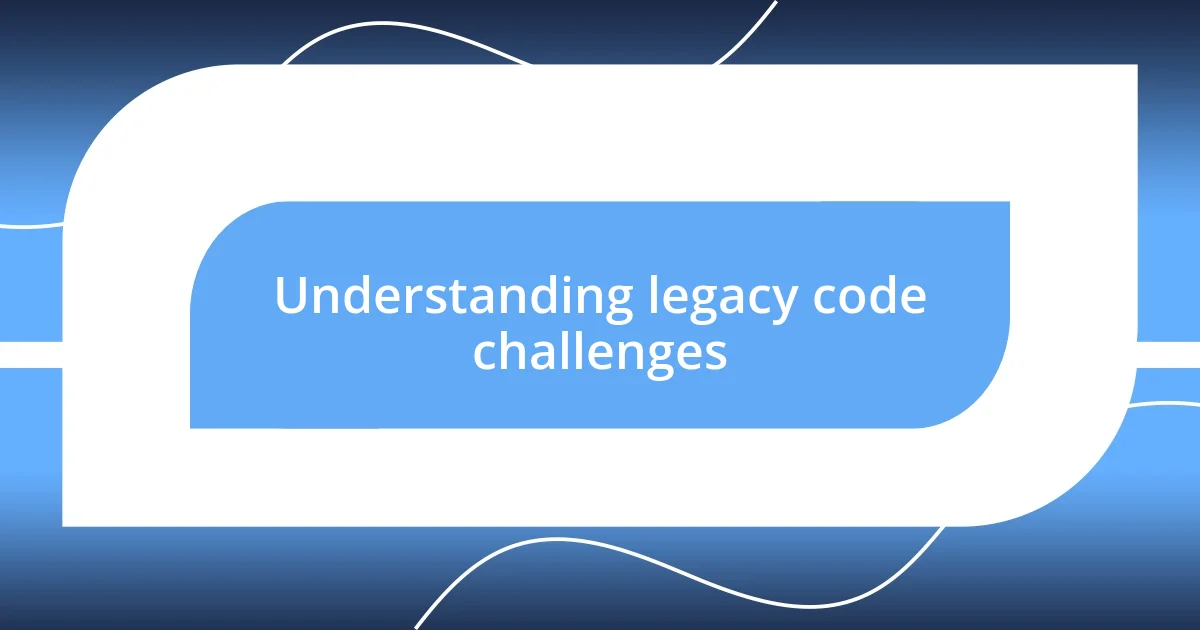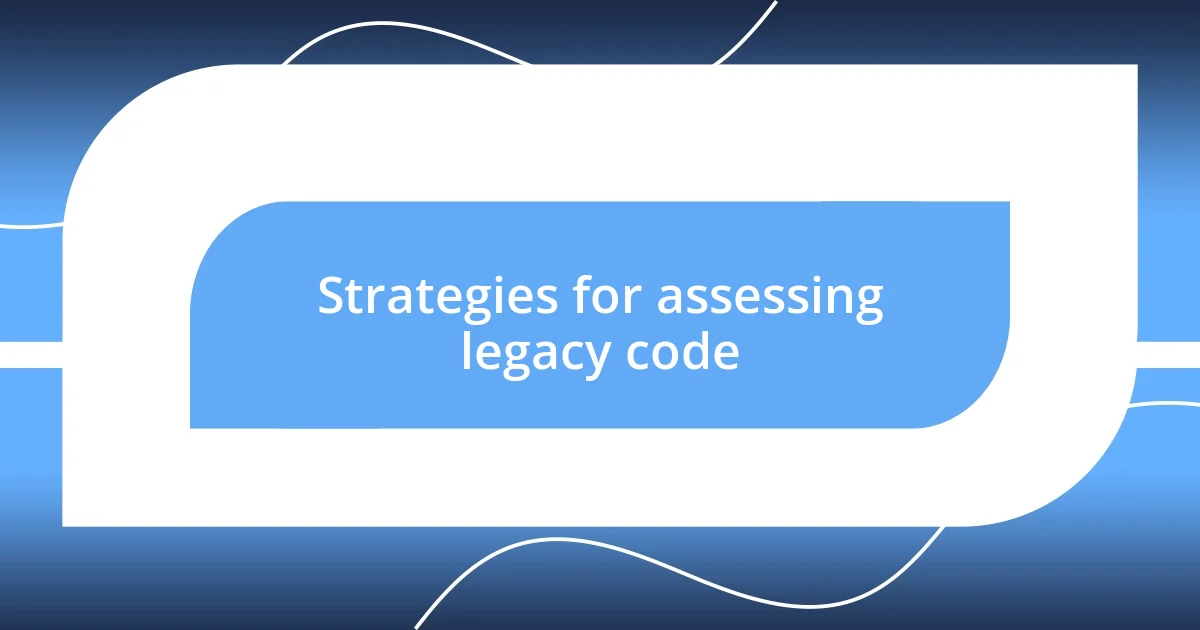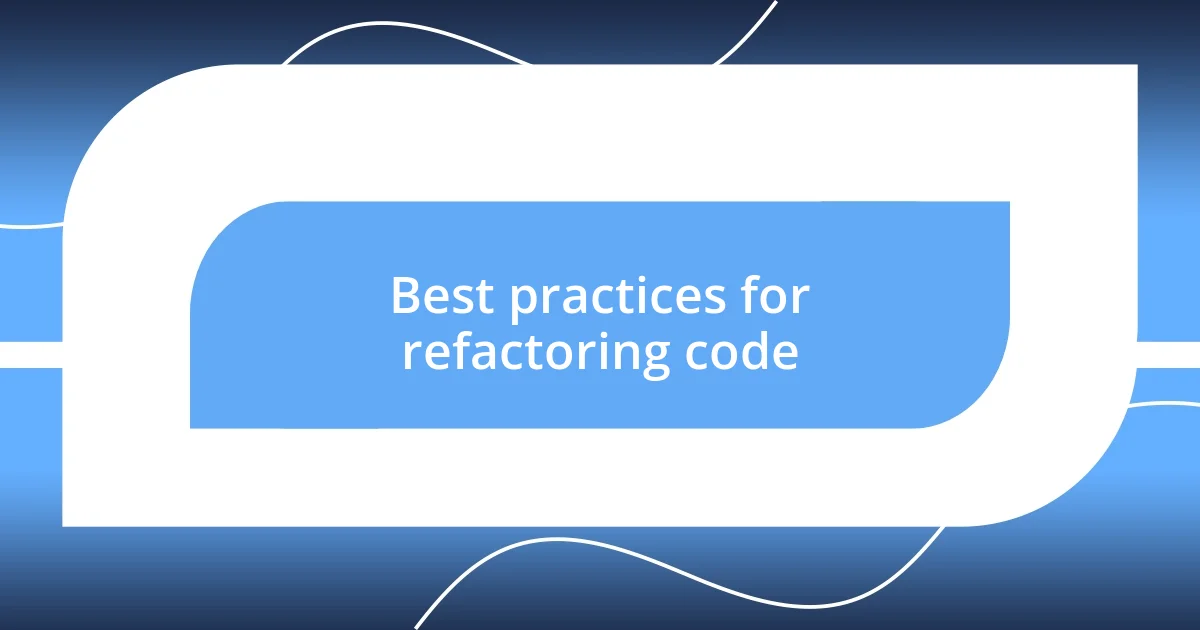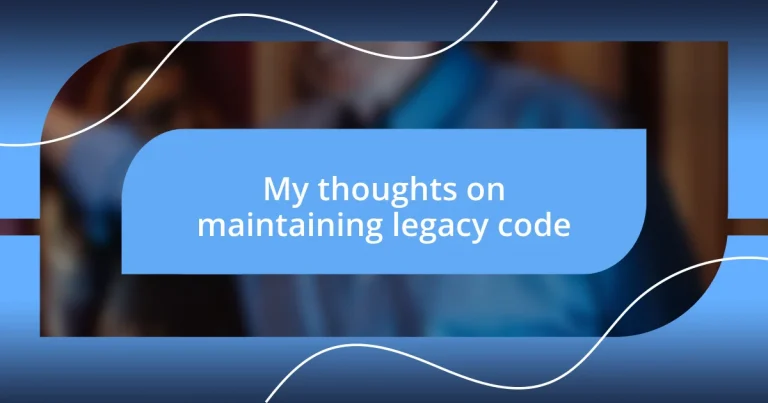Key takeaways:
- Legacy code poses challenges due to its complexity, lack of documentation, and numerous untested sections, making modifications risky.
- Effective strategies for assessing legacy code include collaborative code reviews, creating comprehensive inventories, and implementing automated testing to ensure reliability.
- Best practices for refactoring involve making incremental changes, cleaning up the codebase according to the “Boy Scout Rule,” and planning for sustainable future maintenance through consistent coding standards.

Understanding legacy code challenges
Legacy code often feels like a double-edged sword. On one hand, it holds the knowledge of many years, but on the other, it can also be a puzzle wrapped in an enigma. I remember a project where we had to refactor an ancient codebase that was solid but almost unreadable. It was like digging through a treasure chest only to find most items covered in dust and cobwebs.
One of the biggest challenges I faced was the sheer scale of untested parts within the legacy system. Have you ever tried to modify something without a satisfactory understanding of its inner workings? I can tell you; it feels like walking a tightrope without a safety net. Comprehending the relationships in the code often felt overwhelming, and I found myself second-guessing every change, fearing it would unleash unforeseen bugs.
Additionally, not having up-to-date documentation feels like trying to restore a classic car without a user manual. I’ve spent countless hours tracking down the logic behind features that someone implemented years ago, only to discover there was no clear reason for certain decisions. This can lead to frustration, but also to moments of revelation as you uncover the thought processes of previous developers. How do we respect those decisions while also aiming for progress? It’s a balancing act that, quite frankly, never gets easier.

Strategies for assessing legacy code
Assessing legacy code requires a multi-faceted approach, blending various strategies. One effective technique I often use is code reviews, where team members examine portions of the code together. This not only promotes knowledge sharing but also surfaces blind spots that one person may overlook. I recall a particular meeting where a colleague caught a critical logic error I had missed after spending hours grappling with the code.
Another important strategy involves creating a comprehensive inventory of the code’s components. I find that categorizing functions, classes, and libraries helps clarify what still holds value and what may be obsolete. This reminds me of organizing my cluttered desk; once everything has a designated spot, you can easily navigate your workspace and focus on the project at hand.
Lastly, running automated tests is invaluable. I’ve seen how test coverage can provide a safety net, allowing changes without fear of unintended consequences. During a past project, implementing test-driven development turned out to be a game-changer, leading to faster iterations and significantly reducing the anxiety that often accompanies refactoring legacy code.
| Strategy | Description |
|---|---|
| Code Reviews | Collaborative examination of code by team members, enhancing understanding and uncovering issues. |
| Code Inventory | Categorization of code components to identify valuable elements and those that may be outdated. |
| Automated Tests | Implementation of tests to ensure reliability and safety during code modifications. |

Best practices for refactoring code
Refactoring code effectively is all about incremental, manageable changes. I learned this firsthand when I tackled a particularly gnarly function that seemed to have grown out of control. Instead of trying to rewrite the entire thing in one go, I broke it down into smaller, testable components. It reminded me of untangling a knot—you have to patiently work on one part at a time, or you risk making the situation worse.
One of my go-to techniques is the “Boy Scout Rule,” which encourages you to leave the codebase cleaner than you found it. I remember taking some time to tidy up variable names and remove unnecessary comments in a legacy project. It felt a bit like spring cleaning for the digital realm. Not only did it improve code readability, but it also made me feel more invested in the project. Isn’t it rewarding to create an environment where future developers will want to work?
Planning for future maintenance is equally vital during refactoring. I’ve often asked myself: how can I make this code not just functional but also sustainable? Implementing clear standards and adopting consistent coding styles were steps I took in a recent project. While it initially felt like an uphill battle, the long-term benefits became evident. Suddenly, my teammates and I were on the same page, leading to smoother handoffs and a more collaborative spirit. Wouldn’t you agree that investing in these practices helps you sleep better at night, knowing the code is in good hands?














